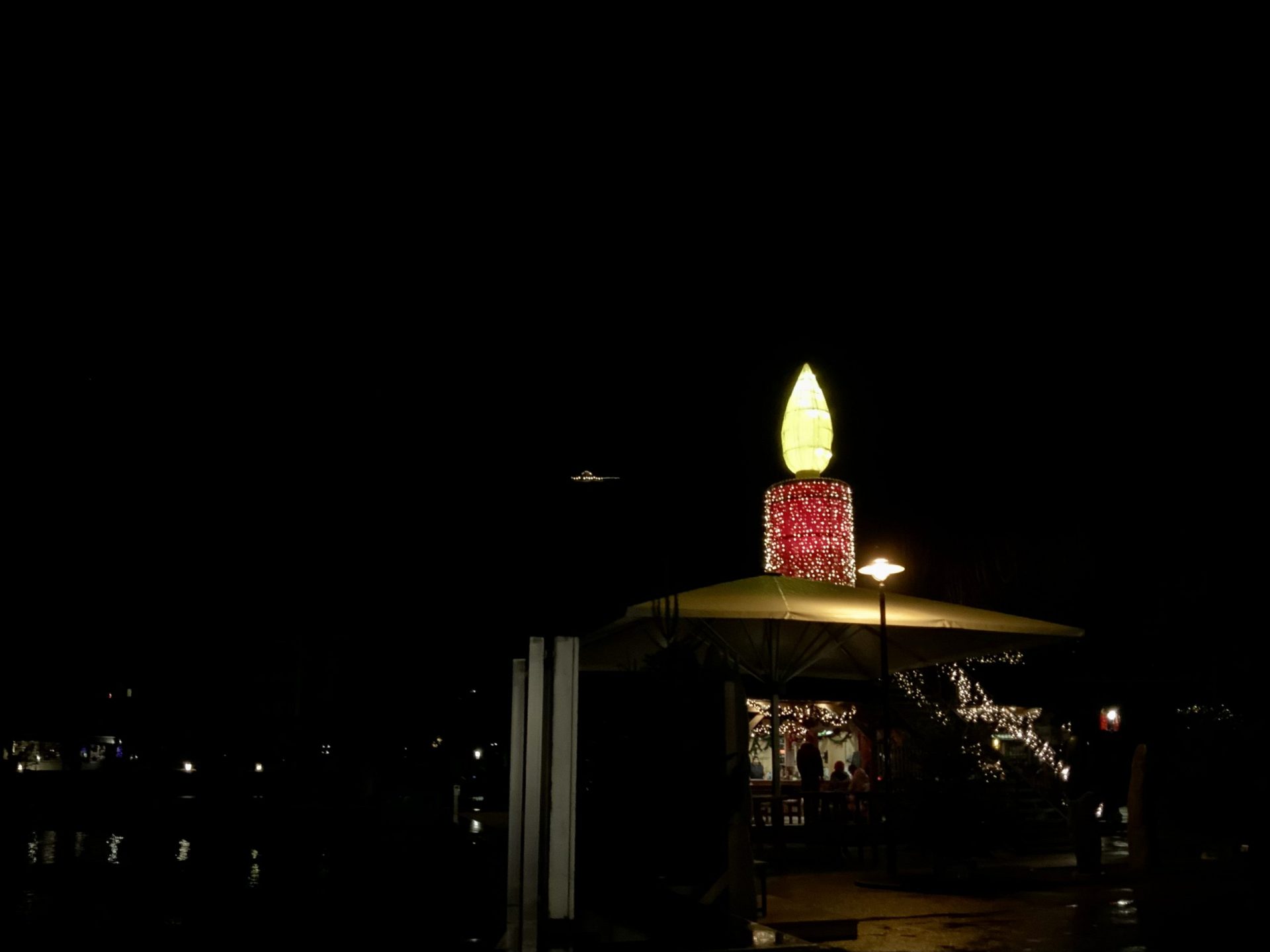Experience Travel Insights
Unwrapping the History of the Austrian Christmas Market: From Medieval Necessity to Imperial Spectacle
by Long Lin-Maurer • September 24, 2025

From Medieval Origins to Imperial Spectacle: The Rich History of the Austrian Christmas Market
The first impression of a Viennese Christmas market is a symphony for the senses: the air, crisp and cold, carries the sweet, spicy aroma of Glühwein and roasted chestnuts. The gentle murmur of festive crowds mingles with the distant strains of a brass quartet, and everywhere, a warm, golden light spills from wooden stalls adorned with fir branches and intricate crafts. It is an enchanting scene, a picture-postcard vision of yuletide cheer. Yet, beneath this glittering surface lies a history of Austrian Christmas Market traditions as deep and complex as Vienna itself. This chronicle of Austria’s Christkindlmarkt stretches back centuries, reflecting the city’s evolution from a medieval stronghold to the heart of a sprawling empire and a modern cultural capital. To truly understand the Viennese Christmas market origins is to read a living history of Central European commerce and social tradition.
The Genesis of Viennese Holiday Markets: Beyond Tinsel and Trinkets
Long before the first Christmas tree was illuminated, the ancestors of today’s festive markets served a far more practical purpose. The past of Austria’s festive markets has its roots in the late Middle Ages, with the first officially sanctioned Medieval December Markets in Vienna granted by Duke Albrecht I in 1296. These were not celebrations of Christmas as we know it, but vital commercial gatherings. As winter tightened its grip on the city, these markets offered a final opportunity for citizens to purchase essential provisions. Farmers from the surrounding countryside would bring in smoked meats, durable cheeses, and winter vegetables, while artisans sold textiles, leather goods, and tools—everything a household needed to endure the long, cold months ahead.
Come and experience travel!
Personally designed, seamlessly delivered – your journey, our expertise!
We are a boutique travel agency and consultancy specializing in Hub & Spoke Tours across Central Europe, the Benelux and the Dolomites.
These early markets were gritty, bustling affairs, driven by necessity rather than nostalgia. The goods on offer were a reflection of the era’s daily life. Alongside foodstuffs, one might find early forms of gingerbread, or Lebkuchen, a durable, honey-sweetened bread spiced with exotic ingredients that arrived in Vienna via ancient trade routes. These were not just treats but high-energy, long-lasting provisions. Similarly, the first simple toys—carved wooden animals or cloth dolls—were not merely festive trifles but the handcrafted products of local artisans plying their trade. The market was the beating heart of the city’s winter economy, a place of exchange that was fundamental to survival.
The Habsburg Influence and the Development of Austrian Winter Markets
As Vienna grew into the resplendent capital of the Habsburg Empire, the nature of its winter markets began to shift. By the 17th and 18th centuries, they became more specialized and festive, known as Nikolo-, Weihnachts-, und Krippenmärkte (St. Nicholas, Christmas, and Nativity Markets). While the imperial court held its own opulent celebrations within the walls of the Hofburg Palace, the tastes and traditions of the aristocracy slowly permeated the city’s culture.
The most significant transformation, however, occurred during the Biedermeier period in the first half of the 19th century. This era marks a key point in Austria’s Advent market evolution. It saw the rise of a prosperous and influential bourgeoisie, who cultivated a new cultural focus on the home, the family, and a certain sentimental domesticity. The Christmas celebration moved from a primarily public, religious observance to a private, family-centric affair. The Christmas tree, a tradition that migrated from Protestant northern Germany, was enthusiastically adopted by Vienna’s elite and middle classes. Suddenly, a new demand was created for decorations to adorn it.
The Christmas markets evolved to meet this demand. The stalls began to overflow with hand-blown glass baubles, intricate tinsel, carved wooden nativity figures, and wax candles. The focus shifted from stocking the larder to purchasing handcrafted ornaments to beautify the home and delight children. The markets became the primary source for the ingredients of this new, romanticized family Christmas, a place where the emerging middle class could purchase the symbols of their prosperity and their commitment to the new ideals of family life.
A Tale of Two Squares: The Altwiener Christkindlmarkt Freyung and a Rich Bazaar Tradition
To understand the character of Vienna’s historic markets, one must look to its ancient squares. For centuries, the most prominent Christmas markets took place not in front of the City Hall, but in the heart of the old city. The Altwiener Christkindlmarkt Freyung is one of the city’s oldest, dating back to 1772. Nestled in a handsome square surrounded by aristocratic palaces, this market has always maintained a more traditional, artisanal character. It was, and still is, a place to find high-quality handicrafts, ceramics, and unique artistic creations, eschewing the mass-produced goods that can dominate larger markets. This commitment to quality speaks to an older, more intimate Austrian Christmas bazaar tradition.
Just a short walk away, the market on the Am Hof square, another of the city’s most historic public spaces, also boasts a rich heritage. For a time, these two squares hosted the city’s primary markets, each developing its own distinct flair. This geographical distribution reveals a key aspect of Viennese life: the city was a collection of neighborhoods, or Grätzel, each with its own center of gravity. The markets were local affairs, serving the communities around them and reflecting a Vienna that was both grandly imperial and intensely parochial.
Come and experience travel!
We design bespoke travel experiences with a perfect balance of cultural depth, efficiency and comfort.
Specializing in seamless hub-and-spoke journeys, we create well-paced, immersive itineraries tailored to your interests.
The Ringstrasse Era: Solidifying Vienna’s Yuletide Market Heritage
The late 19th and early 20th centuries saw Vienna undergo a radical transformation with the construction of the magnificent Ringstrasse. This grand boulevard, lined with monumental buildings like the Opera, the Parliament, and the Burgtheater, was a testament to the city’s imperial power and civic pride. It was in this context that the Christmas market was reimagined once more, solidifying Vienna’s yuletide market heritage.
In the 20th century, the main market, the Wiener Christkindlmarkt, eventually found its permanent home on the Vienna Rathausplatz, in front of the spectacular neo-Gothic City Hall. This move was symbolic, cementing the modern legacy of Austrian Christmas fairs for generations to come. The market was no longer just a commercial hub or a bourgeois shopping destination; it became a grand civic event, a spectacle designed to represent Vienna to the world. Framed by the soaring arches of the Rathaus, the market became a major tourist attraction, a key part of the city’s official identity. The “Dream of Christmas” (Weihnachtstraum) at the Rathausplatz, with its enormous illuminated tree and fairytale-like installations, is the modern culmination of this evolution—a carefully curated experience that presents an idealized vision of Viennese Christmas spirit.
Reading the Stalls: A Microcosm of Viennese Traditions and Craft
While the scale of the markets has changed, the stalls themselves remain a fascinating archive of Central European culture and craft. To look closely at the goods on offer is to take a journey through the former lands of the Habsburg Empire. The delicate, hand-painted glass baubles often trace their lineage to the centuries-old glassmaking traditions of Bohemia (now the Czech Republic). The intricate wooden toys and nativity scenes speak to the rich tradition of woodcarving from the alpine provinces of Tyrol and Salzburg.
Even the culinary delights, from roasted chestnuts to spiced drinks, tell a story. The variety of Punsch and Glühwein reflects a long history of spicing wine, a practice that dates back to Roman times and was perfected in medieval monasteries. The gingerbread recipes, with their complex blend of cinnamon, cloves, cardamom, and honey, are a testament to Vienna’s historic position as a crossroads of trade routes, where spices from the East met the craftsmanship of local bakers. Each stall, in its own way, is a small museum, showcasing skills and Viennese traditions passed down through generations and across borders, a tangible link to a shared Central European heritage.
Today, to wander through a Viennese Christmas market is to walk through these layers of history. This rich Austrian holiday market history shows a tradition that has continuously adapted to the city’s changing fortunes—from a medieval necessity to a Biedermeier delight, and from a local neighborhood gathering to an international symbol of festive culture. The magic of the Christkindlmarkt lies not just in its twinkling lights and festive cheer, but in its profound connection to the story of Austrian yuletide bazaars. It is a place where commerce and community, craftsmanship and civic pride converge, a living tradition that continues to tell the rich, enduring story of Vienna.
History of Austrian Christmas Markets: Key Resources
- The History of Vienna’s Christkindlmarkt: An exploration of the Christkindlmarkt’s evolution in Vienna from the late Gothic period to the present, provided by the official City of Vienna portal.
- Austria’s Christmas Markets: A History: An English-language overview of the historical origins and development of Christmas markets across Austria, from the official Austrian tourist information site’s cultural section.
- From “Kripperlmarkt” to Christkindlmarkt: The History of Christmas Markets: A historical journey through Austrian Christmas markets, from the traditional ‘Kripperlmarkt’ to the modern ‘Christkindlmarkt’, presented by the national public broadcaster ORF.
- Christkindlmarkt Pleasure in the 19th Century: Insights into the festive atmosphere and evolution of Vienna’s Christmas markets in the 19th century, drawn from the historical archives of the Wienbibliothek im Rathaus.
- Christkindlmarkt and Co.: A historical exploration of Christmas markets and related festive traditions in Vienna, providing context from the extensive collections and research of the Wien Museum.
- Christkindlmarkt (Austria-Forum): An encyclopedic entry detailing the origins and historical development of the Christkindlmarkt in Austria, provided by the comprehensive online knowledge base Austria-Forum.
- Advent and Christmas in Historical Sources: A publication from the Austrian National Library offering a collection of historical sources and insights that underpin the development of Advent and Christmas market traditions. (PDF)
- Christkindl Markets in Vienna: A historical overview of Vienna’s Christkindl Markets, tracing their origins and evolution through centuries of urban life and tradition.
- Christmas in Change (University of Graz): Information on academic research projects from the University of Graz, particularly on the evolving traditions of Christmas in Austria, including the role of festive markets.
- Advent and Christmas Customs in the Salzkammergut: An example of registered intangible cultural heritage in Austria, focusing on Advent and Christmas customs in the Salzkammergut region, closely tied to the spirit of local markets.
